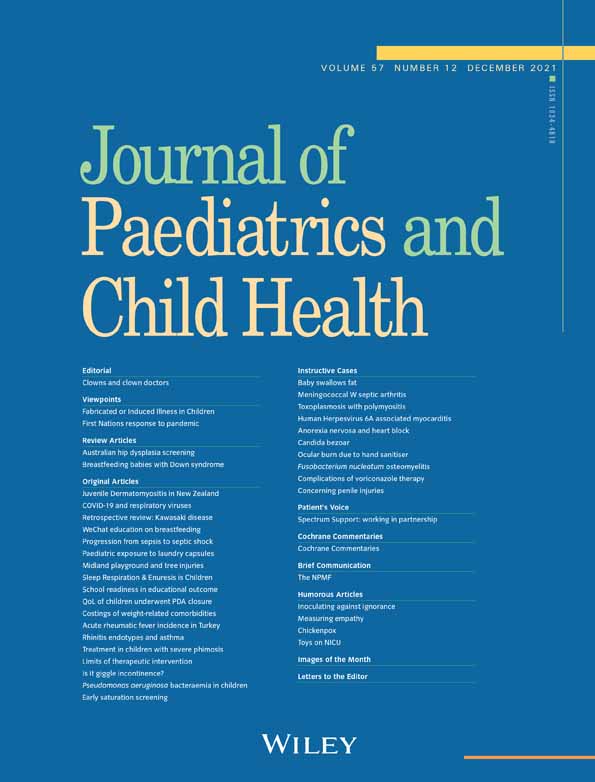Relationship between sleep respiration, architecture and childhood enuresis: Correlates between polysomnography and questionnaire
Conflict of interest: None declared.
Abstract
Aim
Nocturnal enuresis (NE) and sleep-disordered breathing (SDB) are common in childhood. While the two disorders are linked, those links are still being clarified.
Methods
This study compared sleep profiles and enuresis-related behaviours between children with NE and those without, who were referred to a tertiary sleep unit with suspected SDB, using the combination of polysomnography (PSG) and questionnaire. Continuous numerical data were analysed after adjusting for body mass index z-score.
Results
The study included 52 Children (39 boys, 13 girls) aged 5–14 years. Twenty-one had enuresis (10 monosymptomatic enuresis (MNE) and 11 non-monosymptomatic enuresis (NMNE)) and 31 did not have enuresis. The majority had comorbidities. On PSG, all children with NE had moderate obstructive sleep apnoea (OSA) compared to the control group which were of mild OSA. Children with NMNE had a higher percentage time in stage-3 non-REM sleep when compared to the non-enuretic and MNE groups (P < 0.05). On the questionnaire, more parents of the NE groups reported that their child was ‘difficult to wake in the morning’ (P < 0.05).
Conclusion
In this heterogeneous population referred for suspected SDB, children with NE had moderate OSA, yet those with MNE had increased arousals and more often report difficulty waking than children with suspected SDB who do not wet, while children with NMNE exhibit changes in sleep architecture suggesting deeper sleep. These differences may impact treatment choices for children with enuresis.




